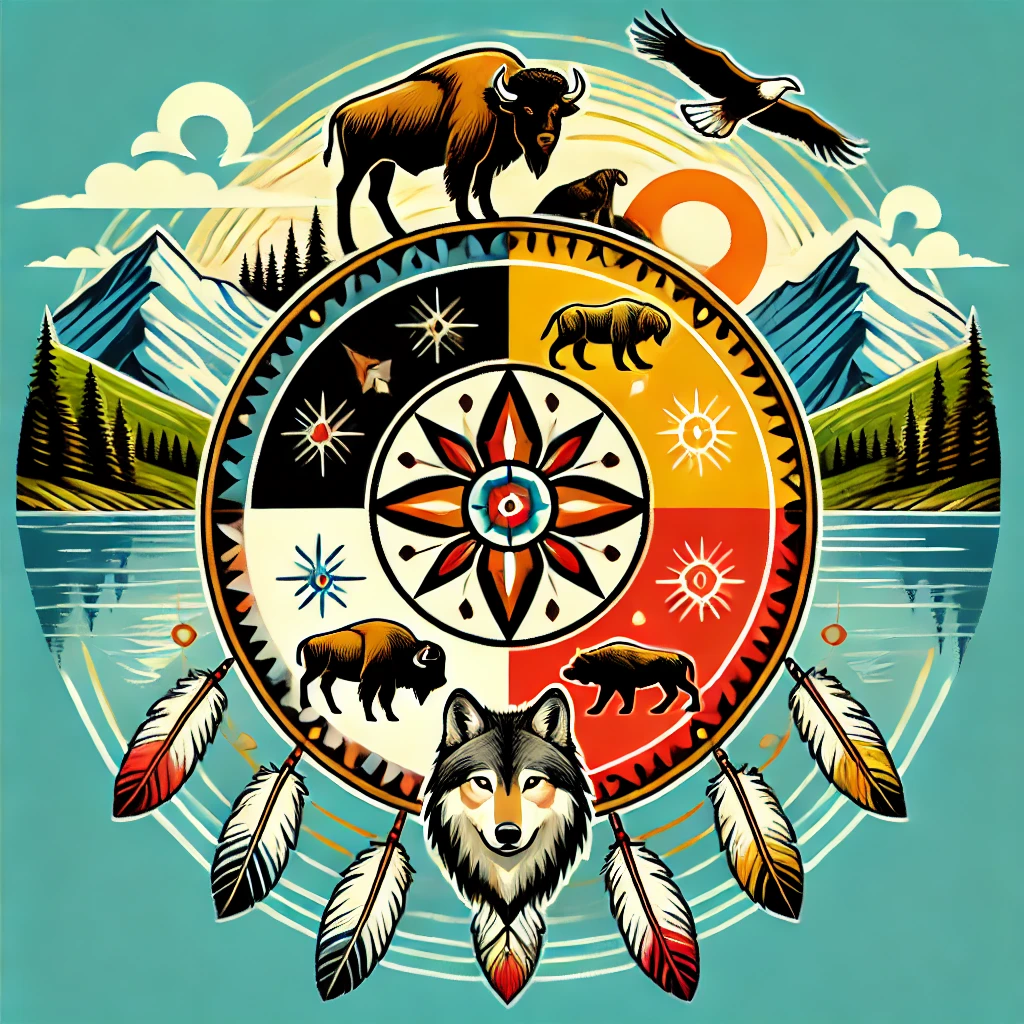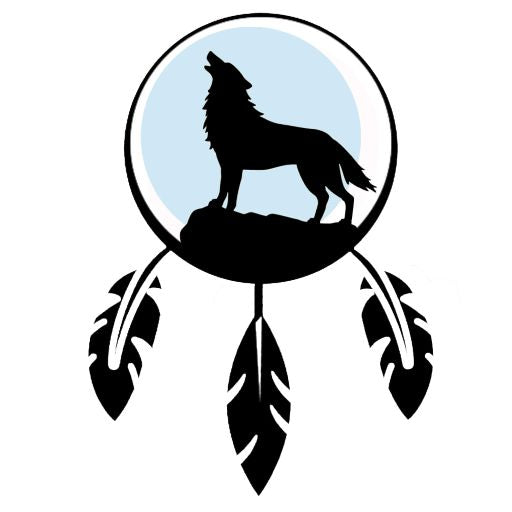The Meaning of the Medicine Wheel in Indigenous Cultures

The medicine wheel, or sacred circle, is a revered symbol in many Indigenous traditions of North America. It represents a path of life and a tool for spiritual healing, offering wisdom passed down through generations. Its meaning encompasses natural cycles, the four directions, and the profound connections between humans, animals, nature, and the cosmos. This article explores the specific meanings of the medicine wheel and its significance in Indigenous teachings and practices.
The symbolic foundations of the medicine wheel
In indigenous cultures, the medicine wheel is not simply a geometric symbol: it is a guide to life, representing the interconnectedness of all beings. The wheel is divided into four quadrants, each with its own meaning, linked to the four cardinal directions, the elements of nature, the seasons, the cycles of life, and essential spiritual aspects.
The circular shape of the wheel represents eternity and the unity of creation. It reminds us that everything in the universe is cyclical and that every ending is followed by a new beginning. This circle also illustrates the indigenous principle of balance—a balance between humanity, nature, and the spiritual.
The four directions and their indigenous symbolism
The medicine wheel is divided into four directions: east, south, west, and north, each with specific attributes.
• East: dawn and renewal
The East, often associated with the color yellow, represents the beginning of every cycle. It is the direction of sunrise and therefore of birth and youth. Indigenous teachings attribute to this direction qualities of clarity, enlightenment, and vision. It is also often linked to the eagle, a sacred animal symbolizing clear vision and spiritual connection, capable of seeing from great heights.
• South: Growth and Emotions
Associated with the color red, the South symbolizes the warmth of summer and physical and emotional growth. Indigenous peoples see this direction as an invitation to explore feelings, to be in harmony with one's emotions, and to open oneself to others. The wolf is sometimes associated with the South, representing loyalty and family, as this animal embodies supportive relationships and the importance of community.
• West: Introspection and healing
The western quadrant is often represented by the color black, evoking twilight, the end of the day, and the beginning of introspection. It is the direction of autumn, a harvest time when we take stock of what life has given us. Indigenous cultures often associate this direction with the bear, a symbol of strength and healing, representing the ability to look within to find answers and wisdom. This direction reminds us of the importance of inner journeying and emotional and spiritual healing.
• North: wisdom and rest
Represented by the color white, the north direction symbolizes winter, a time when nature slows down and rests. In Indigenous cultures, this direction is linked to the wisdom of elders and the purity of truth. The North is a time of final reflection, a time for deeper understanding of life. The bison is often associated with the North, symbolizing strength, resilience, and abundance, teaching that life should be honored and respected.
The sacred element: the four aspects of being
The medicine wheel is not limited to natural cycles. It also teaches inner balance, dividing the human being into four aspects: physical, mental, emotional, and spiritual. To achieve a harmonious life, each aspect must be nurtured and balanced.
• Physical : linked to the direction of the South, it reminds us that the body must be respected and cared for as a sacred gift.
• Mind : associated with the East, the mind represents clarity and vision. It embodies learning, critical thinking, and openness to knowledge.
• Emotional : The West, with its depth and introspection, is associated with emotions. The wheel invites us to respect and understand our emotions in order to flourish.
• Spiritually : the North symbolizes wisdom and connection to something greater than oneself. Nourishing one's spirit is essential to finding peace and balance.
The uses of the medicine wheel in indigenous healing practices
In Indigenous ceremonies, the medicine wheel is used as a sacred space for healing and meditation. It allows each person to identify areas of their life that need rebalancing. Natural objects such as stones, feathers, and plants are often placed in each direction to enhance the wheel's energy.
During healing circles, participants gather around the wheel to share their experiences and support one another in a spiritually nurturing environment. This collective use of the wheel symbolizes the interconnectedness of each individual and the strength of the community in the healing process.
The medicine wheel: a tool for connecting with nature
Indigenous cultures teach that everything in nature is connected, and the medicine wheel is a reminder of this interconnectedness. By incorporating the four directions, the seasons, and sacred animals, the wheel reminds us that humans are one element among many in the cycle of life. It invites us to respect nature and recognize our place within it.
Conclusion
The medicine wheel is more than just a symbol; it is a sacred guide, a path to healing and harmony, not only for individuals but also for communities and nature itself. By meditating on its directions and teachings, each person can find personal balance and a deeper connection with the world around them. It embodies the very essence of Indigenous philosophy: living in harmony, with mutual respect for oneself, others, and the earth.
